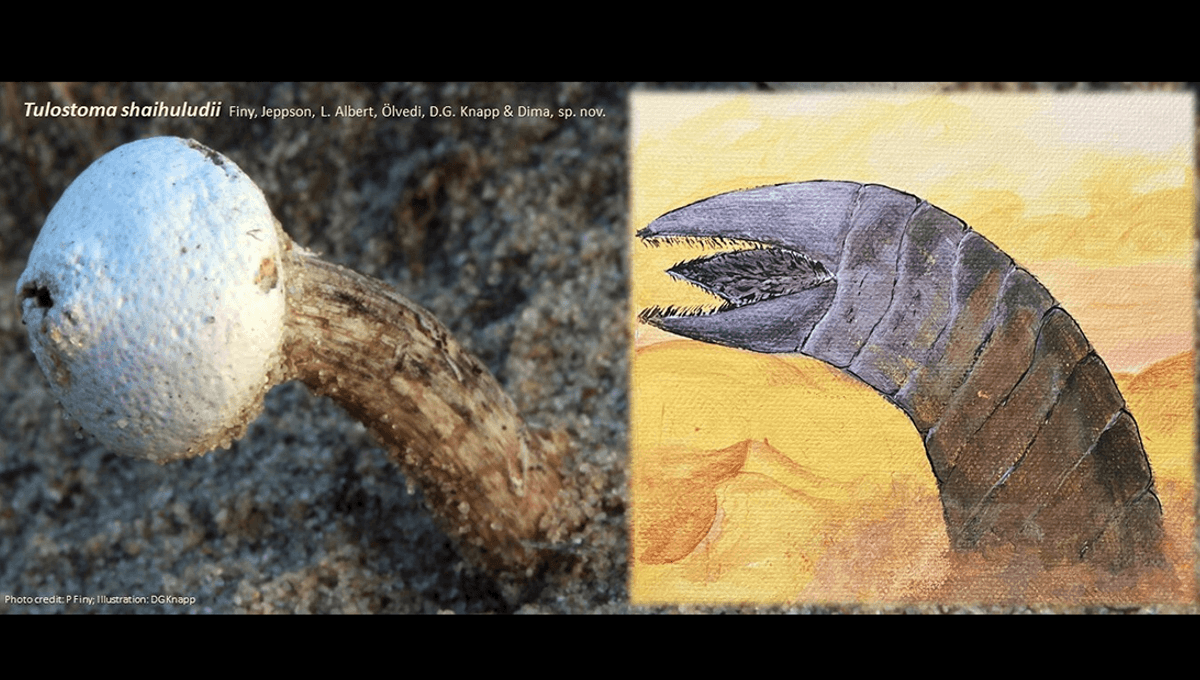
Years of sample collection on the Hungarian steppe has revealed four brand new species of fungi, including one that scientists say bears a striking resemblance to an infamous sci-fi monster. Its worm-like body and sandy dwelling place led the team to dub the new species Tulostoma shaihuludii, after the Shai-Hulud sandworms that feature in Frank Herbert’s Dune novels.
All four of the new species belong to the genus Tulostoma, more commonly known by their decidedly non-threatening name of stalked puffballs. This moniker comes from the spherical fruiting bodies that they produce on the end of a stalk, from which their spores are released when disturbed by the wind or trampled by an animal.
In the case of T. shaihuludii, you can seek why the researchers made the connection with Herbert’s monstrous worms – but you needn’t go as far as Arrakis to find such unusual lifeforms.
The vast Pannonian steppe in southern Hungary, close to the borders with Romania and Serbia, is known to be a hotspot for stalked puffballs. The sandy soil peppered with grassy thickets provides the perfect habitat for gasteroid fungi such as these, but conditions can be tough. The region sees little rainfall, and in summer and autumn the sand temperatures can soar, so Tulostoma species have had to evolve resilience.
The new identifications are based on samples collected in the area over 25 years.
“In Hungary, so far 19 species have been recorded, including the four new species proposed in this study,” the authors write, hinting that the land is yet to reveal all its secrets: “our ongoing studies indicate the presence of many more undescribed species of Tulostoma in Central Europe.”
While they may not have a movie-star fictional worm as a namesake, some of the other new discoveries have their own distinctive features.
“Tulostoma sacchariolens stands out as the only fragrant stalked puffball species, a rarity among puffballs,” the authors told Newsweek. “Tulostoma hungaricum holds the title of the world’s smallest stalked puffball. Tulostoma shaihuludii‘s curved stalk is a distinctive feature within its genus.”
Along with the new finds, the team’s comprehensive taxonomic research is an important addition to our understanding of this group of organisms. For example, they were able to demonstrate that another species, T. dunense, is a new species that emerged as a result of geographic isolation, being closely related to but genetically distinct from similar species found in North America.
Sadly, as the authors point out, Tulostoma species are rare, with the majority being red-listed by the European Council for the Conservation of Fungi. Knowing the best ways to protect them starts with learning as much as we can about their diversity and habitat.
Who knows what other mythical monsters could be lurking just beneath the sand?
The study is published in the journal MycoKeys.
Source Link: New Fungus Found Erupting From The Sand Named After Dune's Monster Sandworms